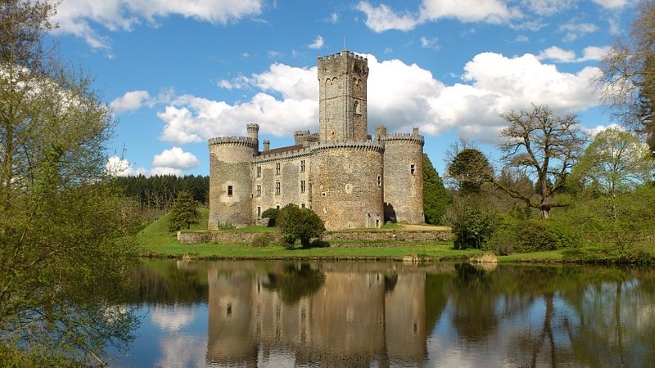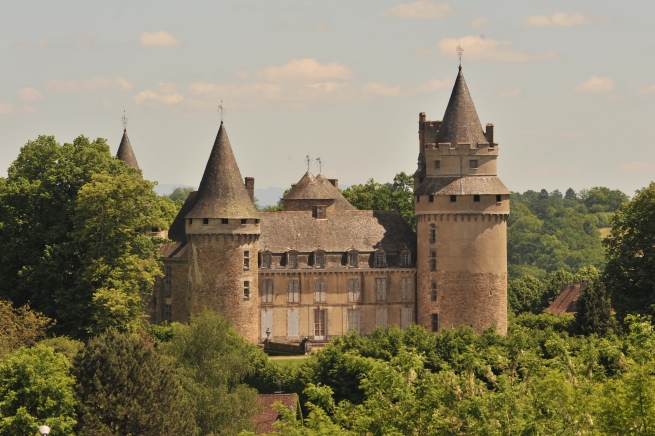The Route of Richard the Lion Heart

Take a journey of discovery along the Lion Heart’s Route
When Richard the Lion Heart, son of Elanor of Aquitaine, inherited the Duchy in 1169 he set off on a crusade with the French King Philippe-Auguste. In his absence the regional overlords took the opportunity to strengthen their defences against his return. The line of fortified towns and castles which run from Etagnac to Pompadour to the south-west of Limoges form the route of Richard the Lion Heart. The route also links the places which formed the backdrop to his life here.
If you set off from Etagnac you can visit the Chateau de Rochebrune, then on to Rochechouart where the original castle was rebuilt in Renaissance style in the 15th Century. The castle was sacked during the French Revolution but was restored and now houses the Museum of Contemporary- Art.
Your next stop is the Eglise des Salles at Lavauguyon, the church is an example of Romanesque architecture and houses some fine 12th Century Frescoes. Then onto Chateau de Brie, a fortified manor built in the 1500s in gothic style.
A short drive away is the marvellously preserved 12 century castle of Montbrun, which is surrounded by a moat and situated in a lush green valley. Richard, after being shot with an arrow at Chalus, heard that there was treasure here. From his death bed he ordered an attack on the Chateau.

Montbrun, photo: Jonathan Chapon
Next on the route is Chalus, it is here that the lord of Montbrun put up a fierce resistance to Richard’s mighty army. During the siege of the castle Richard was shot by an arrow and died on 6/4/1199 in his mothers arms. Parts of the original castle still stand next to the ruins of the 11th Century Romanesque church where Richard the Lion Hearts remains are said to be buried.
Les Cars; Now in ruins (it was raised to the ground during the French revolution), although remains of the former fortified and Renaissance castle can be seen.
Chateau de Nexon, the 12th Century castle now houses the town hall. Whilst at Nexon also visit the 19th Century stud farm and park which are open all year round and with free entry.
Lastours; Also in ruins is the 12th Century keep of Lastours. From the 10th Century the Lastours family was one of the most powerful in the county of Limoges.
Le Chalard; Here you can see the Monk’s tombs. The Monastery of St Augustine, famous for its fortified Romanesque church, and cemetery of 40 medieval monks’ tombs, was founded by St Geoffroy (1060-1125) who became a hermit. A fortress was added inside the monastery in the late 12th Century to defend the village and abbey from the Lion Heart’s attacks.
Chateau de Jumilhac-le-Grand; Jumilhac, just inside the Dordogne border, was coveted by the Lion Heart as coins were minted there.
St-Yriex-la-Perche; renowned for its porcelain and kaolin and a superb 12th century collegiate church.

photo: Mairie de coussac-bonneval
Coussac Bonneval; The original 11th Century fortress was destroyed in the 100 years war, and rebuilt in the 15th Century and updated throughout the 17th and 18th Centuries. The Bonneval family has lived here for over 6 centuries. The Chateau is sumptuously furnished also with an inner courtyard of Italian inspiration.
Last but not least is Segur Le Chateau; Officially one of France’s most beautiful villages, Segur is built along the banks of the Auvezere, below the imposing ruins of its castles.
For more French History, visit FranceToday.com
Share to: Facebook Twitter LinkedIn Email
Leave a reply
Your email address will not be published. Required fields are marked *



